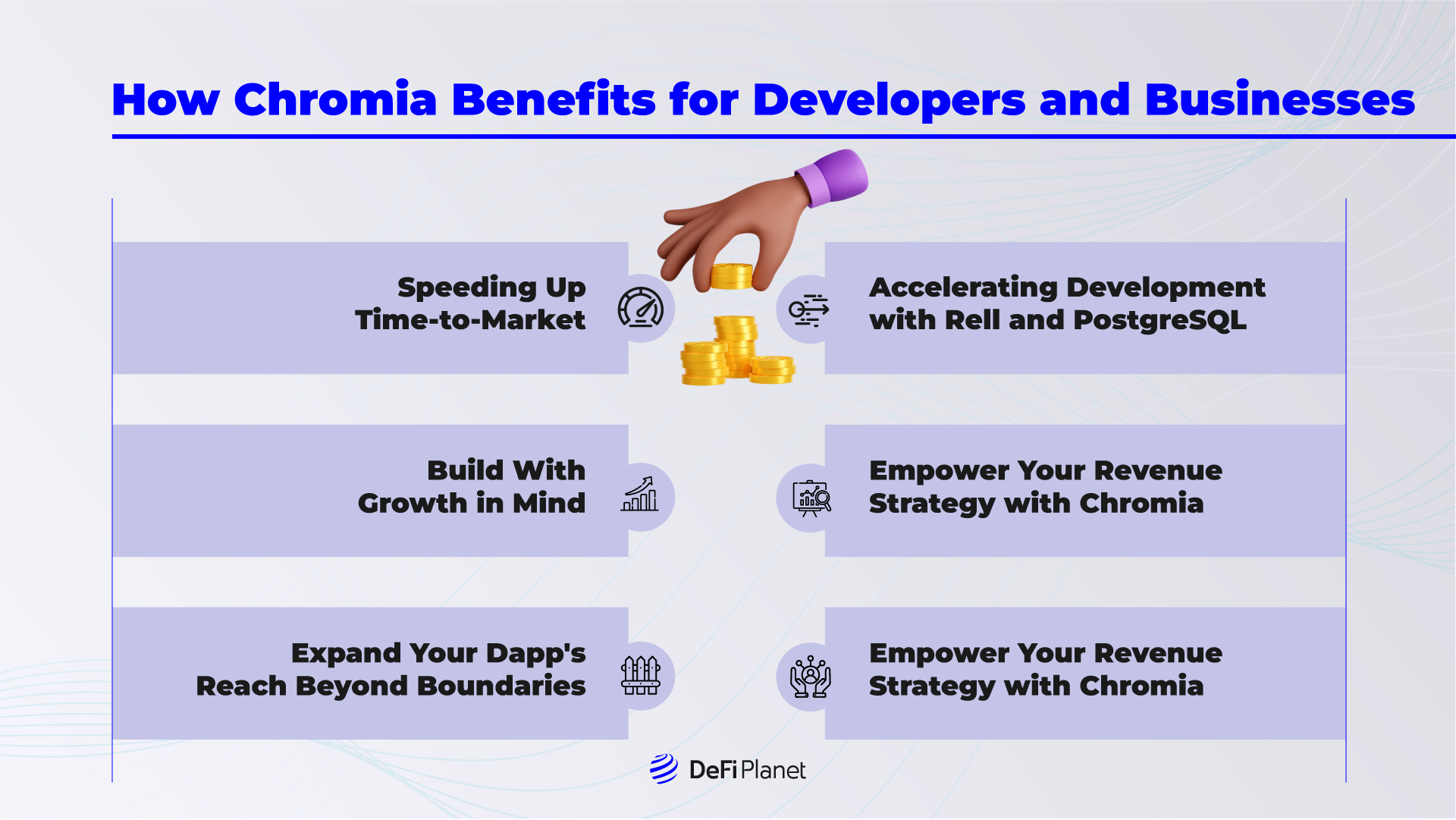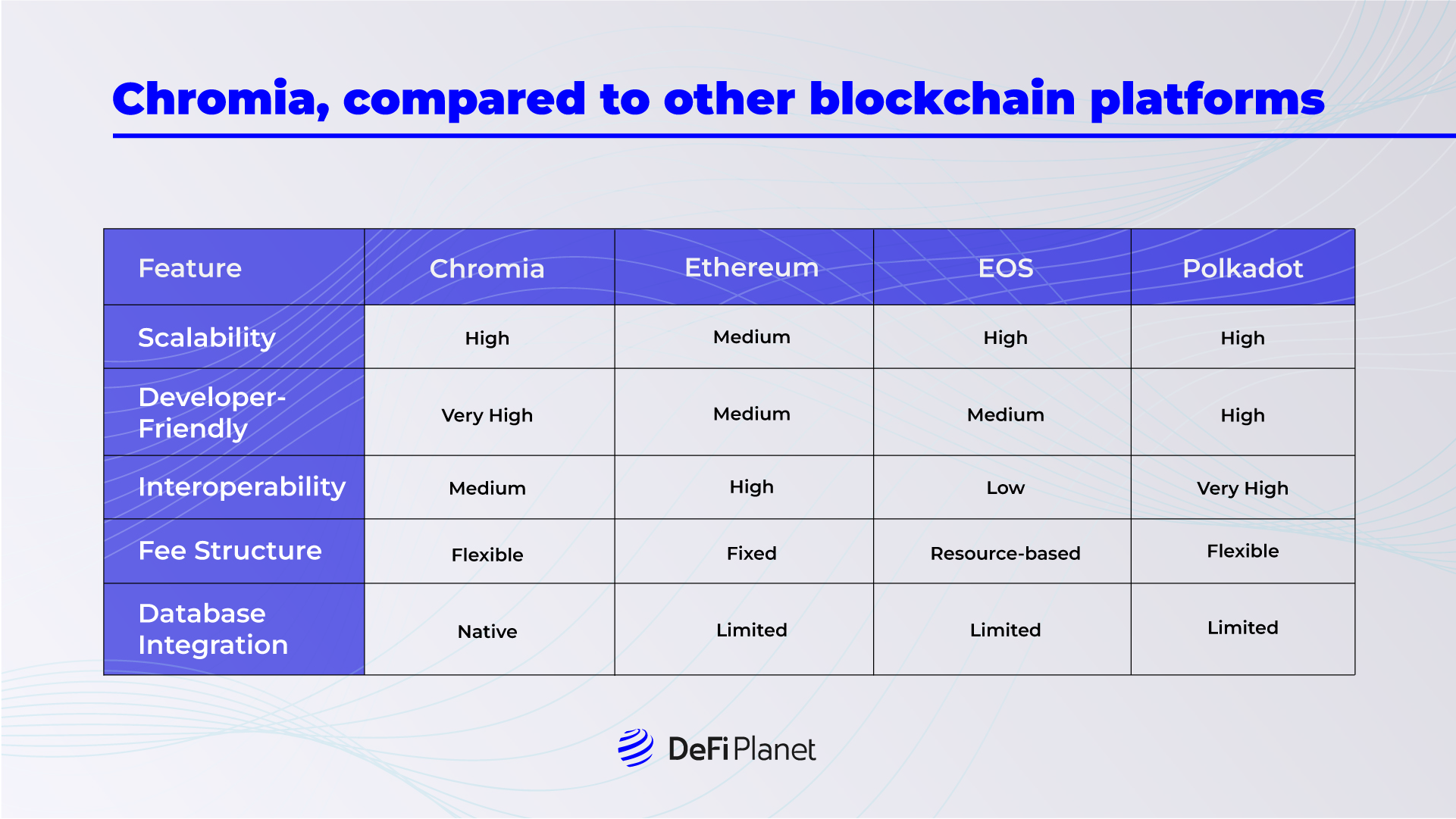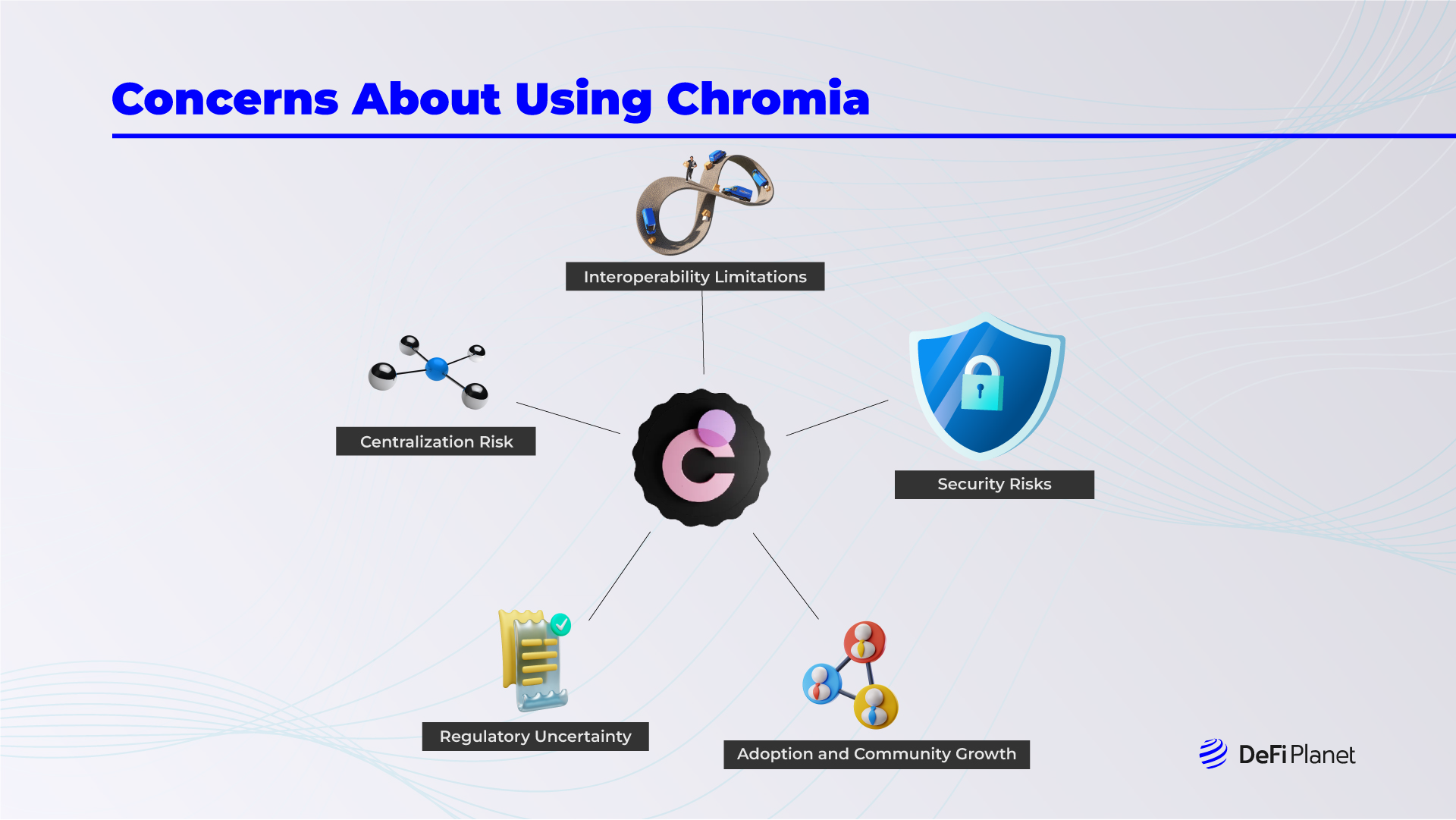With their basic list-format data storage, traditional blockchain networks often struggle to handle complex data sets and often rely on centralized servers and third-party providers. This reliance leads to issues like poor user experience, high fees, frustrating developer experiences, and inadequate security.
Swedish company, Chromaway, is trying to solve these issues with Chromia, an open-source blockchain network whose MVP Mainnet officially launched on July 16, 2024.
Chromia’s solution is to replace the data storage and management system by integrating relational databases into blockchain architecture. This way, the platform enables dApps to scale to millions of users without incurring high fees or compromising security and user experience.
How Chromia Works
Chromia combines the relational database approach, a straightforward way of structuring information in tables, rows, and columns, with blockchain technology’s immutability and decentralization to create a more intuitive and powerful platform. This integration allows for recording structured blockchain data in linked relational tables, enabling direct on-chain data queries, efficient read-and-write operations, and real-time data indexing.
In Chromia’s setup, nodes handle traditional blockchain processes ( transaction processing, block validation, voting, and consensus mechanisms) using a lightweight software layer while maintaining the blockchain ledger. Data is initially written to one node, which then distributes it to others. Once consensus is achieved, the data is permanently logged into the blockchain.
Central to Chromia’s operation is “Postchain”, a system that combines blockchain security with advanced database capabilities. It is designed to handle complex queries and allows developers to create decentralized apps (dApps) on separate blockchains native to Chromia or external to it.
Postchain runs on Kotlin and is built to run efficiently on the Java Virtual Machine (JVM), which is great for servers and comes with lots of tools and libraries. This technology is crucial for Chromia because it helps meet the needs of high-performance dApps. These include fast transaction confirmations in just one second, handling at least 500 transactions per second per sidechain, and managing up to 100,000 updates and reads every second.
The platform’s consensus mechanism is an enhanced form of the Byzantine Fault Tolerant (eBFT)mechanism. Since each dApp on Chromia runs on its blockchain, this modified consensus allows the multiple nodes to validate transactions for network security and reliability.
Chromia organizes nodes into two clusters: the System Cluster and the dApp Cluster. The System Cluster manages essential system services, while the dApp Cluster hosts decentralized applications (dApps) with dedicated resources. Each dApp operates autonomously on its blockchain, and cluster nodes validate transactions and route them to their respective dApp blockchains.
In addition, Chromia facilitates data transfer between the multiple chains in its ecosystem through two protocols: ICMF (Interchain Messaging Facility) and ICCF (Interchain Confirmation Facility).
Chromia optimizes dApp development by leveraging PostgreSQL for data storage and querying and employs Rell (Relational Language) to streamline blockchain development, reducing the learning curve for developers with database experience.
The platform also includes the Chromia Vault, a wallet software designed to manage tokens securely and dApps on the blockchain.
The CHR Token
The CHR token is central to the Chromia blockchain, fulfilling various roles within the ecosystem. Initially an ERC-20 token on Ethereum, it has been migrated to Chromia’s native blockchain after its mainnet launch. These are some of the basic roles it performs:
- Acts as collateral for new node installations
- Facilitates dApp deployment and transaction fees
- Operates within staking and reward systems for network participants
- Enables developers to create tokens backed by CHR
How Chromia Benefits The Blockchain Ecosystem
 Though users of dApps on Chromia will enjoy the platform’s seamless interactions and efficiency, the developers and businesses built around these applications are the biggest beneficiaries for the following reasons.
Though users of dApps on Chromia will enjoy the platform’s seamless interactions and efficiency, the developers and businesses built around these applications are the biggest beneficiaries for the following reasons.
Accelerated Development of Protocols and dApps
Chromia helps speed up blockchain development in a way that allows developers to bring their ideas to market quickly. It achieves this with its user-friendly development language, Rell, and compatibility with PostgreSQL. This setup allows developers, particularly those from web development backgrounds, to focus on their dApp’s features. For instance, a game developer can use Rell language and PostgreSQL to quickly build an interactive gaming platform, focusing on game mechanics rather than backend infrastructure.
The platform also makes the Development of blockchain-based applications accessible to a broader audience beyond just those with extensive blockchain expertise. This change allows creators to easily deliver innovative blockchain solutions worldwide, focusing on refining their business logic rather than dealing with technical challenges. As a result, this accelerates the time-to-market for their products.
Scalability
Chromia’s architecture prioritizes scalability and performance. With a focus on high throughput and efficient consensus mechanisms, the platform supports robust and optimal performance for most dApps.
A DeFi platform built on Chromia can handle increasing transaction volumes without compromising performance, ensuring a smooth user experience during periods of peak usage.
Customizable Fee Structures
Chromia empowers developers with customizable fee structures tailored to their product vision and revenue goals, including subscriptions, microtransactions, and dynamic pricing. This flexibility supports innovative revenue models, fostering creativity in how Dapps engage financially with users and nurturing an ecosystem where new business models thrive. For instance, a healthcare dApp on Chromia can implement microtransactions to access medical records securely, creating a sustainable revenue stream while offering affordable healthcare solutions to users.
Interoperability
Chromia facilitates seamless interaction with assets and smart contracts beyond its network through Ethereum anchoring. This interoperability enables developers to integrate Ethereum’s popular NFTs or use various tokens as collateral within Chromia-based applications. For example, an NFT marketplace on Chromia can offer Ethereum-based NFTs for trading, expanding the range of digital assets available to users and enhancing platform utility.
Concerns About Using Chromia
There are potential issues and concerns that could impact Chromia’s effectiveness and adoption. These are some of them.
Centralization Risk
Chromia uses a relational database system, which critics argue could concentrate decision-making power compared to fully decentralized blockchains. In this setup, different nodes may have varying roles or privileges, potentially centralizing authority within specific entities. For example, if a small number of entities control most validating nodes on Chromia, it might raise worries about centralization affecting how the network operates and evolves.
Interoperability Limitations
Though Chromia is interoperable with Ethereum, there are concerns about its ability to seamlessly integrate with other blockchain ecosystems beyond Ethereum. For instance, if developers want to connect with blockchains other than Ethereum, the current anchoring method might not support direct communication or data sharing, limiting the types of decentralized applications that Chromia can effectively support.
Security Risks
Despite implementing the eBFT consensus method and other security measures, Chromia faces common risks seen in blockchain platforms. These include vulnerabilities in smart contracts, potential exploits, and the threat of malicious attacks. For example, vulnerabilities in smart contracts deployed on Chromia could lead to financial losses or disruptions in the dApps, impacting user trust and the platform’s reliability.
Adoption and Community Growth
Chromia’s success depends on its ability to attract and retain developers and users to build and use dApps on the platform. There has to be a deliberate effort to cultivate a thriving community capable of innovating and maintaining diverse applications that would happen as a result of the ecosystem being simple enough to attract developers and users.
Regulatory Uncertainty
Like other blockchain platforms, Chromia must navigate evolving regulatory environments worldwide. Uncertainty regarding cryptocurrency regulations, smart contracts, and data privacy could impact its operations and adoption.
Balancing compliance with regulatory requirements while preserving decentralization and user privacy poses significant challenges. For instance, changes in regulatory frameworks might affect how Chromia interacts with financial institutions or handles user data. The platform may need adjustments in its architecture or operational practices to remain compliant and operational.
In Conclusion
Chromia represents a significant step forward in blockchain technology, offering a unique solution to traditional blockchains’ complex data management challenges.
The potential applications of Chromia span various sectors, including finance, gaming, real estate, insurance, and healthcare. Its ability to handle complex data structures efficiently, coupled with its scalability and customizable fee structures, positions it as a strong contender in the blockchain space.
The success of Chromia will ultimately depend on its ability to deliver on its promises of improved performance, ease of Development, and scalability, while also fostering a robust ecosystem of developers and users.
As the blockchain industry continues to evolve, Chromia’s innovative approach may well prove to be a pivotal development in the quest for more efficient, scalable, and user-friendly blockchain solutions.
Disclaimer: This article is intended solely for informational purposes and should not be considered trading or investment advice. Nothing herein should be construed as financial, legal, or tax advice. Trading or investing in cryptocurrencies carries a considerable risk of financial loss. Always conduct due diligence.
If you would like to read more articles (news reports, market analyses) like this, visit DeFi Planet and follow us on Twitter, LinkedIn, Facebook, Instagram, and CoinMarketCap Community.
“Take control of your crypto portfolio with MARKETS PRO, DeFi Planet’s suite of analytics tools.”






















